"As we were heading over, I did some quick calculations and figured out that if we're going to fill every floor about floor-to-ceiling with McDonald's playpen balls, it would take in the neighborhood of 35 to 40 million of them," remarked Randall Munroe, former NASA roboticist, creator of the webcomic xkcd and the author of the new book What If: Serious Scientific Answers to Absurd Hypothetical Questions (Houghton Mifflin Harcourt) at the Union Square Barnes & Noble in New York City last Friday night.
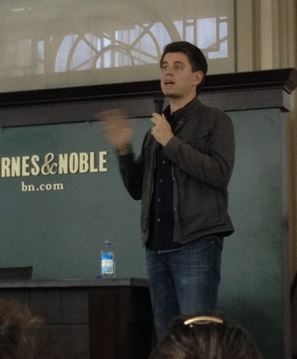 |
| Randall Munroe |
"That would cost you in the neighborhood of $10 million," he continued. "If any Barnes & Noble people here are thinking about spicing things up, making it a more interesting shopping experience, I think they should really consider that investment."
Munroe gave an engaging talk about his background, his methods and some of his favorite What If? scenarios before answering a few audience questions and then signing books for more than 400 fans. The line wound around three floors of the bookstore, and the author didn't finish signing until after 11 p.m. He began his presentation with the very first question he answered on his What If? blog: What would happen if you tried to hit a baseball pitched at 90% the speed of light?
The answer, in short, is "a lot of things," and none of them happen to be very good for the pitcher, batter or anyone remotely close to this hypothetical baseball diamond. Among those many things, the baseball would hit the air molecules in its path so hard that nuclear fusion would occur, the pitcher would begin disintegrating as soon as the ball left his hand, and the batter would likewise be disintegrated before even seeing the ball leave the pitcher's hand.
"The last thing I wanted to look up was what the rules of baseball say about this situation. And it turns out they're a little ambiguous; they don't really address this for some reason," Munroe deadpanned. "But my best guess is that in this situation the batter would be considered hit by pitch, and would be eligible to take first base, if it still existed."
The What If? blog, Munroe recounted, grew out of a day he spent teaching a class on the physics of energy for summer program for high schoolers at MIT. He'd never done a physics lecture before, and for the first hour of the class gave what he considered to be a standard, run-of-the-mill talk. The students were listening, but Monroe could tell that they weren't very interested.
"I recognized that 'I'm sort of listening but my mind is wandering' expression, because that's the expression I had through my entire undergraduate, high school, middle school education," he said. "I remember being that student."
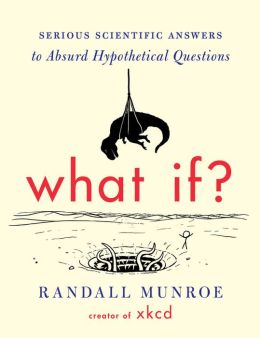 At some point during the lecture, the subject of Yoda came up, and then to give an example of potential energy, Munroe used the scenario of Yoda lifting Luke Skywalker's X-Wing with the Force in The Empire Strikes Back. If they could figure out the weight of an X-Wing, Munroe told them, they could figure out Yoda's power output. Suddenly, the students were paying much closer attention, and they reached the answer faster than Munroe could walk them through it. It wasn't that he had abruptly begun explaining the information better, he pointed out, it was that he had asked a question they cared about.
At some point during the lecture, the subject of Yoda came up, and then to give an example of potential energy, Munroe used the scenario of Yoda lifting Luke Skywalker's X-Wing with the Force in The Empire Strikes Back. If they could figure out the weight of an X-Wing, Munroe told them, they could figure out Yoda's power output. Suddenly, the students were paying much closer attention, and they reached the answer faster than Munroe could walk them through it. It wasn't that he had abruptly begun explaining the information better, he pointed out, it was that he had asked a question they cared about.
Once they determined Yoda's power output, the students compared that figure to things in real life (Yoda's power output in that scene, incidentally, is a little bit less than that of an electric Smart car), and from there they started looking at other expressions of power in popular fiction, such as Sauron's eye exploding in the final The Lord of the Rings movie. The students were coming up with questions faster than Munroe could begin to answer them.
In this burst of interest, Munroe saw reflections of himself: although advanced mathematics had had their own abstract pleasures, they were never the things that had truly interested him as a student. They were instead tools that let him answer fascinating questions.
What If? became a way of collecting, and answering, some fascinating questions. For the blog, Munroe answers one question each week. Sometimes, if a submission is too complex, he has to give it a pass in favor of a less complicated question. One of the joys of working on the book, he explained, was that it gave him some time to return to some of those passed-over questions. One old favorite that he finally answered: What if you build a periodic table where every brick is made from the corresponding element?
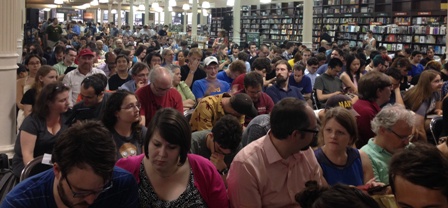 |
|
xkcd fans waiting for Munroe at B&N.
|
It would begin harmlessly enough, with bricks of hydrogen and helium dissipating into the air. Then you'd have a brick of pure fluorine--one of the most dangerous and most reactive chemicals out there--to worry about, and before long you'd have toxic gasses from sulfur, arsenic and phosphorous fires on your hands. Things would start to get really bad when you reached the element astatine--a radioactive element that decays so quickly and so violently that it heats up to the point where it's brighter than any possible external light source. And by the time you'd reach the bottom row of transuranic (after uranium) elements, the resulting chain reaction would be like a nuclear bomb that kept going off. Said Munroe: "After the first five seconds, it would be exploding less, but still exploding."
Ever since the popularity of What If? took off, many people have asked Munroe if he's doing it all for education, to popularize the tools of science, to drum up interest in the STM fields, or something to that effect.
"Maybe a little, but not really. My goal with this is to find out the answers to these questions," he said. "If I think about it in the abstract, when I'm far away from it and not working on a question, then sure, I want to communicate about science and how cool these things are. But when I'm actually doing this, what I want to know is, how powerful is Yoda?" --Alex Mutter
 The new store will be about the same size as the Midtown store--5,000 square feet--all on one level. The ceilings are 18 feet high and the space will feature many of the beautiful fixtures from the old store, including bookshelves, chandeliers, sconces and furniture.
The new store will be about the same size as the Midtown store--5,000 square feet--all on one level. The ceilings are 18 feet high and the space will feature many of the beautiful fixtures from the old store, including bookshelves, chandeliers, sconces and furniture.








 The bookstore planned for the Cultural Services of the French Embassy in the U.S. building,
The bookstore planned for the Cultural Services of the French Embassy in the U.S. building, 
 Authors United
Authors United The Southern Independent Bookstore Alliance's
The Southern Independent Bookstore Alliance's  The New Atlantic Independent Booksellers Association's
The New Atlantic Independent Booksellers Association's 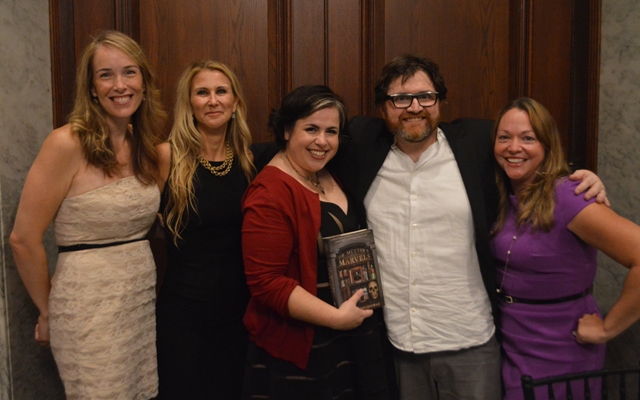 Last Thursday, the
Last Thursday, the 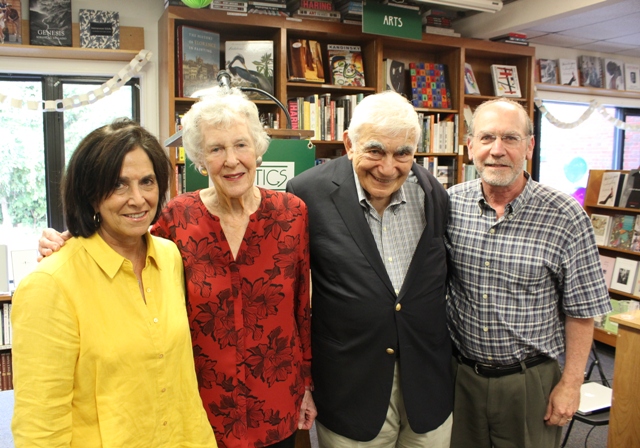 Yesterday,
Yesterday,  "If you're a reader, or know a reader, chances are you'll find a book to purchase or a gift to buy at
"If you're a reader, or know a reader, chances are you'll find a book to purchase or a gift to buy at 
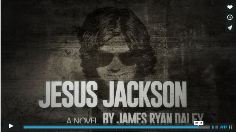 Jesus Jackson
Jesus Jackson
 At some point during the lecture, the subject of Yoda came up, and then to give an example of potential energy, Munroe used the scenario of Yoda lifting Luke Skywalker's X-Wing with the Force in The Empire Strikes Back. If they could figure out the weight of an X-Wing, Munroe told them, they could figure out Yoda's power output. Suddenly, the students were paying much closer attention, and they reached the answer faster than Munroe could walk them through it. It wasn't that he had abruptly begun explaining the information better, he pointed out, it was that he had asked a question they cared about.
At some point during the lecture, the subject of Yoda came up, and then to give an example of potential energy, Munroe used the scenario of Yoda lifting Luke Skywalker's X-Wing with the Force in The Empire Strikes Back. If they could figure out the weight of an X-Wing, Munroe told them, they could figure out Yoda's power output. Suddenly, the students were paying much closer attention, and they reached the answer faster than Munroe could walk them through it. It wasn't that he had abruptly begun explaining the information better, he pointed out, it was that he had asked a question they cared about.
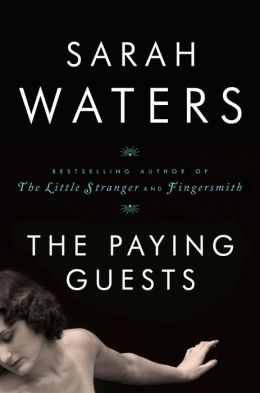 The Paying Guests, an absorbing and richly satisfying historical novel, is set in the midst of the collapsing social order of post-World War I England. It seduces the reader with the promise of another period domestic drama that mines class differences. This novel, however, is by Sarah Waters (Tipping the Velvet), and as she did in her Man Booker Prize-shortlisted Fingersmith, she adds an illicit love affair between two women and, midway through, recasts it as a twist on a murder mystery. This premise may sound impossibly ambitious, but Waters is a gifted storyteller and her sixth novel delivers on many levels.
The Paying Guests, an absorbing and richly satisfying historical novel, is set in the midst of the collapsing social order of post-World War I England. It seduces the reader with the promise of another period domestic drama that mines class differences. This novel, however, is by Sarah Waters (Tipping the Velvet), and as she did in her Man Booker Prize-shortlisted Fingersmith, she adds an illicit love affair between two women and, midway through, recasts it as a twist on a murder mystery. This premise may sound impossibly ambitious, but Waters is a gifted storyteller and her sixth novel delivers on many levels.